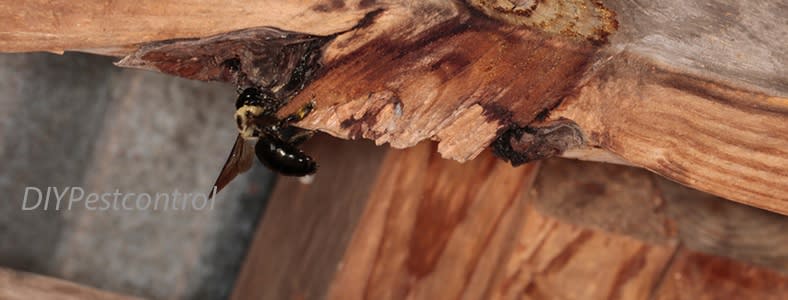
Carpenter Bee Signs and Identification
Carpenter Bee vs. Bumble Bee: What do Carpenter Bees look like?
What Do Carpenter Bees Look Like?
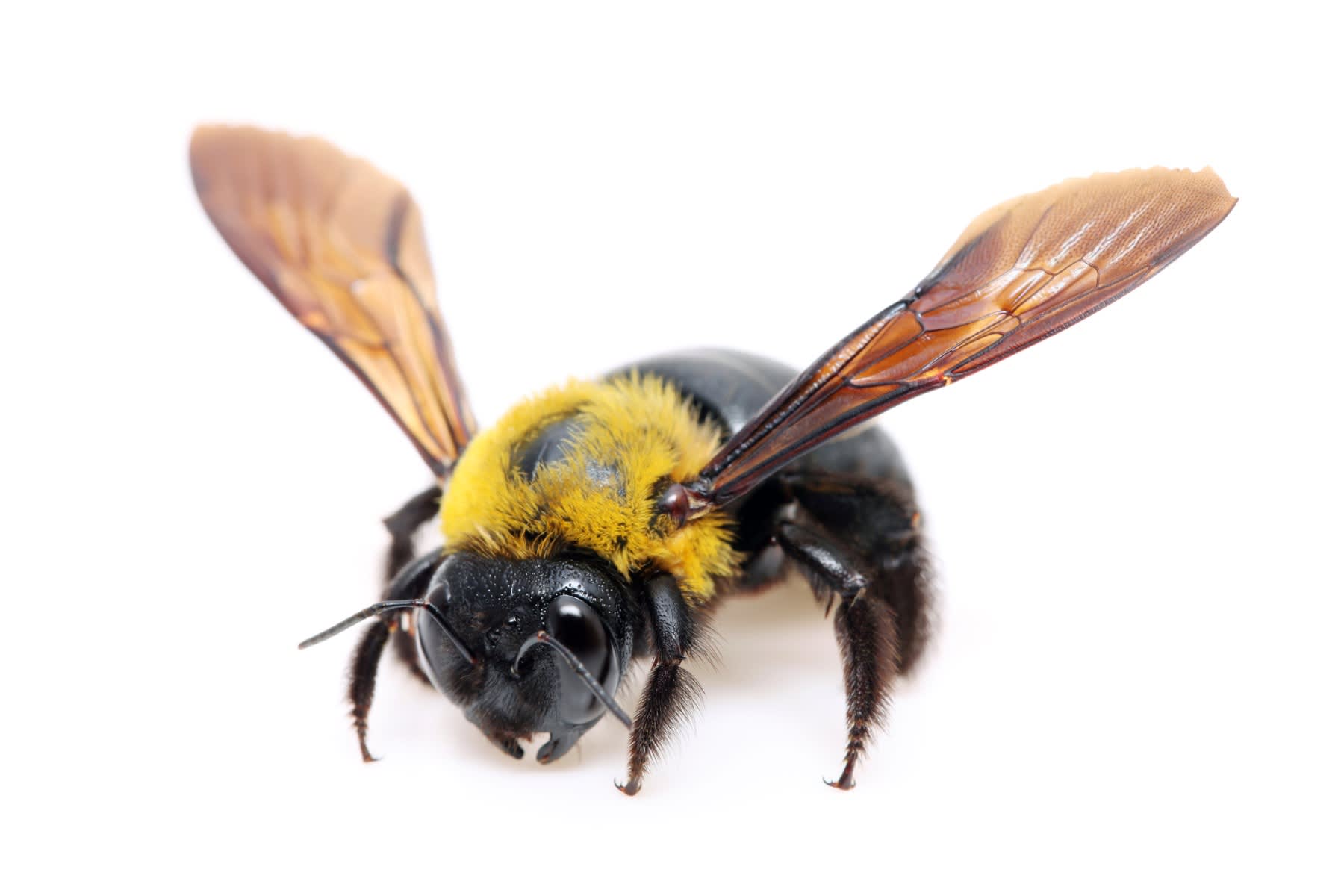
Carpenter bees get their common name from their habit of boring into wood to make galleries to rear their young. These are worldwide in distribution, with seven species occurring in the United States. Carpenter Bees don't have a hive as honey bees but are solitary bees. The female Carpenter bee can get into small areas, boring holes.
Adult body length is about 1/2 to 1 inch (12.5 to 25 mm). These bees are robust, resembling bumblebees, with the abdomen's top surface mostly bare and shiny. Carpenter bees are primarily black, but some species may be green or purplish. The male has a yellow face with a white dot on their heads. The female's face is black.
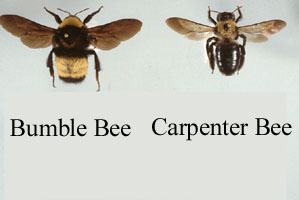
Difference Between Carpenter Bees and Bumble Bees
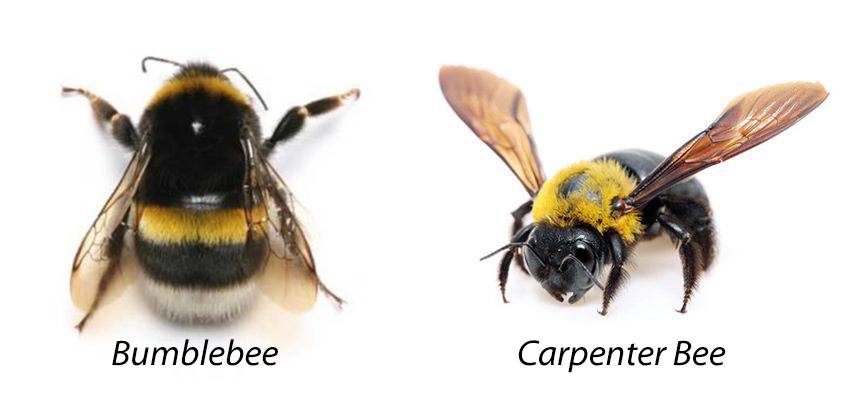
The most common carpenter bee species is the Xylocopa virginica and may be confused with the bumblebee. The carpenter bees and the bumblebees have distinct nesting behaviors.
They can resemble bumblebees, but the upper surface of their abdomen is bare and shiny black. In contrast, bumblebees have a hairy abdomen with at least some yellow markings. Bumblebees don't nest in the wood, but rather on the ground.
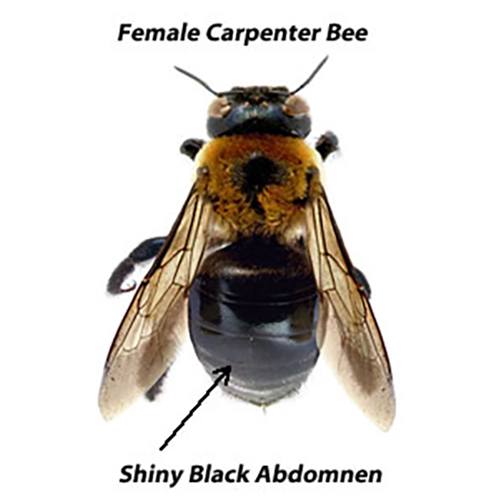
Size: 1/4" to 1"
Colors: Carpenter Bees have a blue-black, green, or purple metallic sheen with a shiny, relatively hairless abdomen.
Nests: Carpenter bees burrow in exposed wood to make nests. Carpenter bees get their name from their ability to drill through wood and nest in it. Their drilling will create a nearly perfect hole approximately 1/2 inch in diameter. You will see round holes and a coarse sawdust‐like substance called frass underneath the holes. The holes are perfectly round and are about 3/8 inch in diameter. You may find old holes near the newer ones. Old nests can be used year after year by the carpenter bees. Their holes are usually located on the underside of any wood surface, including siding, soffits, overhangs, decks, fence posts, fascia boards, and window frames.
More signs are brownish or yellowish excrement stains below the entrance hole to the galleries.
Carpenter Bees are Solitary Bees: Carpenter Bees do not swarm, and live alone, and rarely sting. Every female is fertile. They find or make holes to lay eggs in cells. They will seal the cells once the food is deposited for the baby carpenter bees. The female does not return to the sealed cells. Solitary bees are Carpenter Bees, Miner bees, Leafcutter bees, and Digger Bees. Solitary bees are more efficient in-plant pollination than social bees.
Carpenter Bee Stings: Since Carpenter Bees are solitary bees, they are not known to sting often. The female Carpenter bee may sting if provoked.
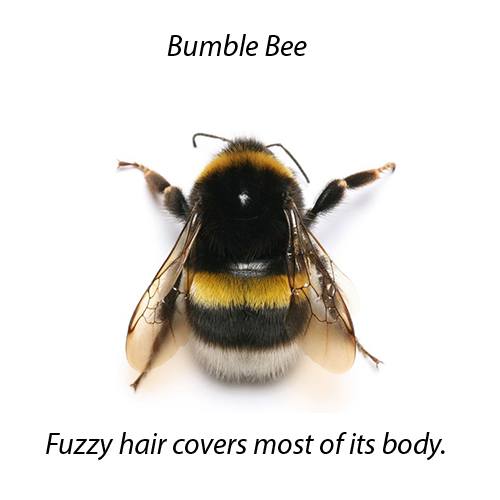
Size: 3/4" to 1"
Colors: Bumblebees are hairy with a fuzzy abdomen with soft fuzzy hair covering most of their bodies. They have bands of contrasting black and yellow coloring.
Nest: Bumblebees usually burrow in the ground. They can use abandoned rodent burrows and cavities beneath patio stones, piles of compost, and landscape timbers. They can occupy bird nest above ground or in structural voids in outside walls or soffits of attics. They do not typically nest in structures like Carpenter bees.
Bumble Bees are Social Bees: Bumblebees live in hives and make honey and wax in their hives. They will sting if the hive is in danger, but most often ignores humans. The queen is the only fertile female. The hive is ruled and is dependent on the queen.
Carpenter Bee Habits & Biology
Carpenter Bees are insects that overwinter in wood. They come out in the spring ( usually April or May) and mate. The females lay their fertilized eggs in excavated cells/tunnels called galleries. Since Carpenter Bees pollinate, they provide the baby (larvae) carpenter bees with a ball of pollen. These larvae emerge in the summer as adults.
During the spring, the males seek out the females, hovering around females that found some unfinished wood, such as under eaves, railings, etc. The males are territorial and will confront you if you enter their territory, but they are incapable of stinging. Females have a stinger but are very docile. Females will nest in all types of wood but prefer weathered and unpainted wood.
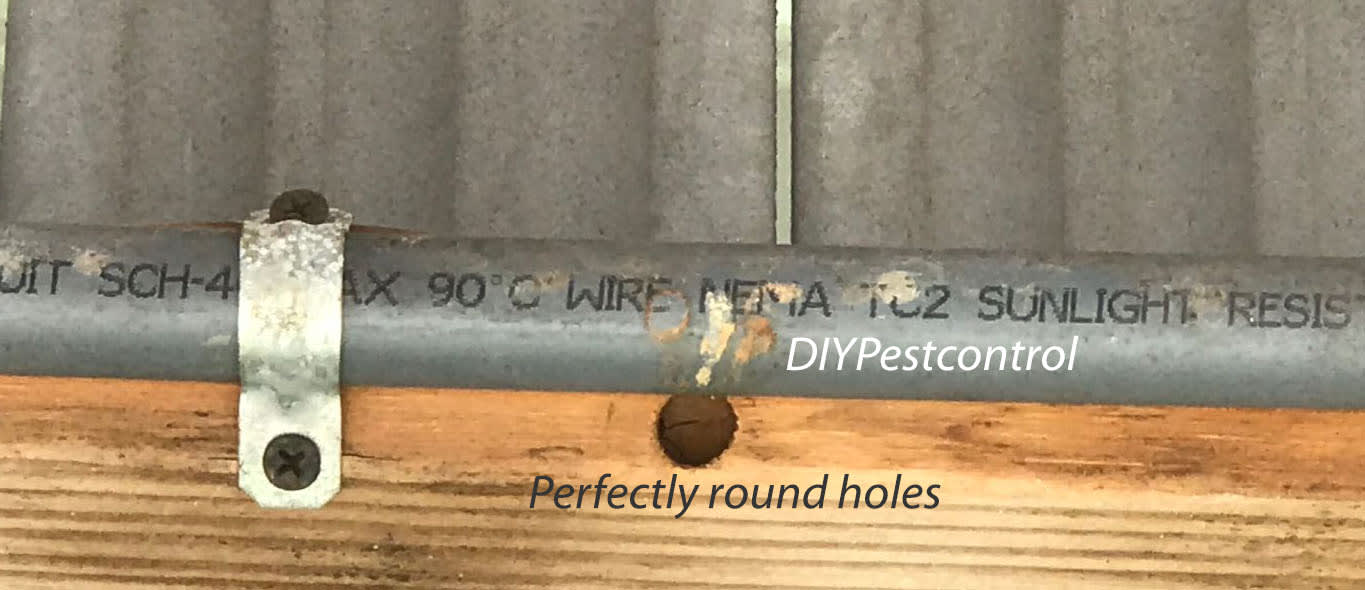
Male carpenter bees tend to be territorial and can buzz around you if you approach closely, sometimes hovering a short distance in front of your face or buzzing around your head. Since males have no stinger, these actions are just for show and intimidation.
- They first make a hole in the wood to lay eggs. The size is usually about 1/2" in diameter. The female carpenter bee can squeeze through incredibly tiny places to bore into untreated wood. She will often make excavate new tunnels for egg laying.
- They make a 90‐degree turn and form a gallery about 6" long (but can form a gallery as long as a couple of feet). The gallery contains cells in which the female lays eggs.
Carpenter Bee Galleries
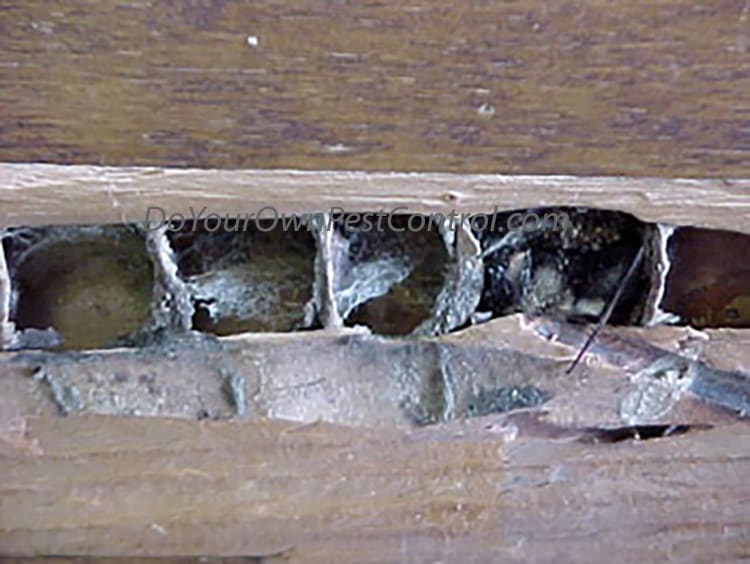
The females use these galleries to lay eggs. A typical gallery has an entrance hole on the wood surface and continues inward for a short distance. It then turns sharply upwards and runs in the same direction as the wood. The female provides a ball of pollen on which an egg is laid. She closes the gallery by placing a mass of wood pulp, constructing a series of cells. This understanding of their construction is important when dusting carpenter bee holes.




